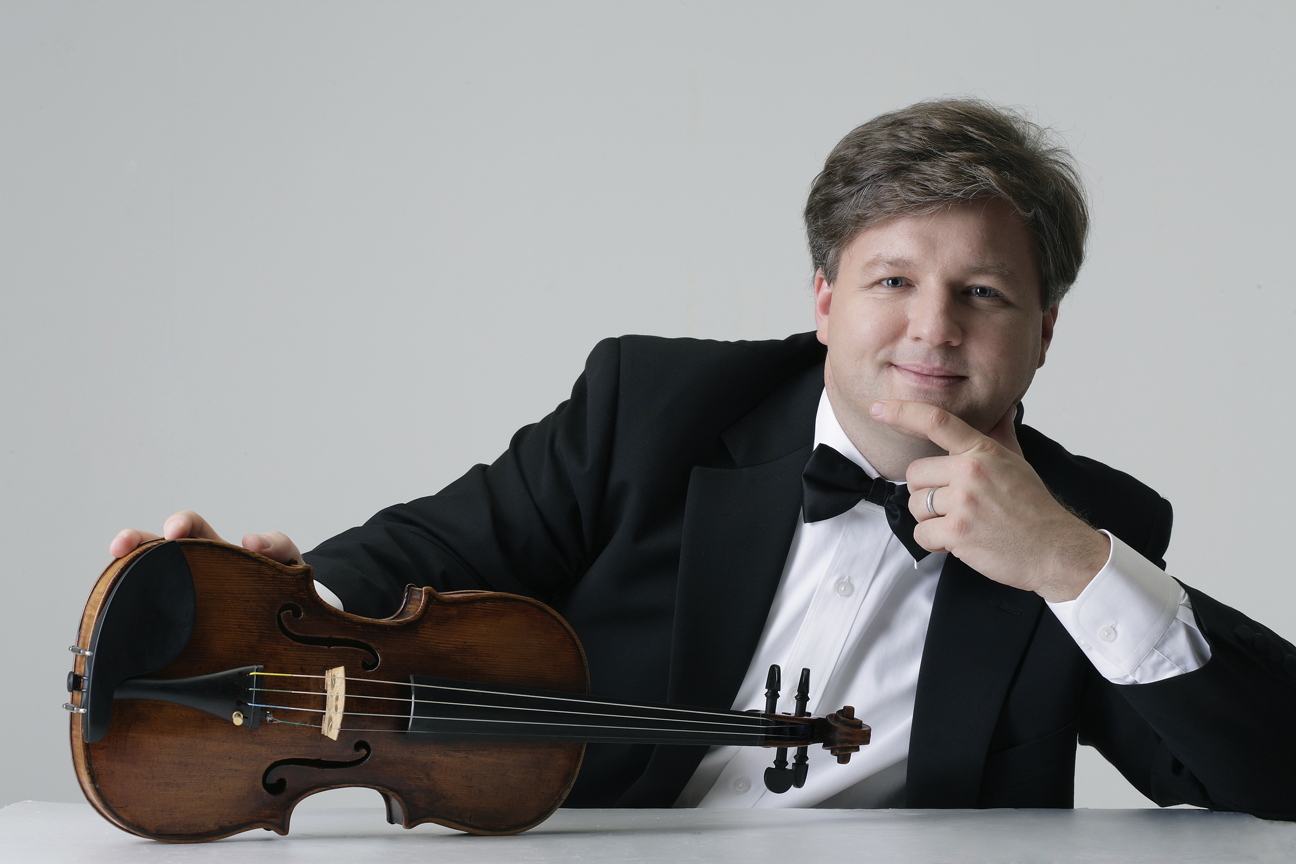Described as New York’s leading community orchestra, the New York Repertory Orchestra consists of professional and amateur musicians. They come together for the joy of making music, which they share by performing “provocative programs” at the highest possible level. And they certainly have a lot of fans: at this concert, the church was filled with appreciative, enthusiastic, obviously regular listeners, who greeted one another, and the players, like old friends.
The Orchestra was founded in 1991 by its Music Director, David Leibowitz, who has conducted operas, ballets and concerts world-wide; he also teaches at various prestigious colleges, universities and summer institutes. As he proved on this occasion, he is not only an excellent conductor, but also an inspiring leader.
The program was adventurous and ambitious, and consisted of rarely played works – a wise choice in a city so full of concerts. It opened with the Concerto for Small Orchestra Op. 34 by Albert Roussel (1869-1937), written in 1927. The first movement is lively, energetic, and quite dissonant; the second is slow, somber and languid, featuring long, sustained chords in the woodwinds; the third is a marathon run of fast notes in perpetual motion. The orchestration is colorful and inventive.
The Roussel was followed by Astor Piazzolla’s “Four Seasons of Buenos Aires,” arranged by Leonid Desyatnikov and Gidon Kremer for violin and string orchestra, with the French-born violinist Olivier Fluchaire as soloist. After winning his first competition at age eleven, Fluchaire studied with Yehudi Menuhin at his London School and concertized throughout Europe; he came to New York, where he now lives, in 1992, and studied with Daniel Phillips and Patinka Kopec. He is active as soloist and chamber musician, and also teaches at several colleges, including Hunter College and the City University. A spectacular virtuoso, he played with effortless brilliance, unbridled passion, and a remarkable flair for Piazzolla’s rhythmic and melodic idiom. Due to the acoustics, the orchestra sometimes covered him, but the pieces’ many unaccompanied cadenzas showed his sonorous, intense, variable tone to fine advantage. He warmly acknowledged Principal Cellist Shanda Wooley, who stood out in a substantial solo.
The program concluded with the Symphony No. 4, Op. 29 by the Danish composer Carl Nielsen (1865-1931). Written in 1914, it reflects his horror at the outbreak of World War I, and expresses his belief that “even if all things were destroyed or dead, nature would begin to breed new life again.” He called it “The Inextinguishable” because “music is life, and like life, inextinguishable.” The Symphony has four contrasting, connected movements; the music fluctuates between outbursts of chaotic frenzy played by full orchestra, and serene, almost cheerful melodies played by groups of solo instruments; at times it disintegrates, then revives with renewed energy; it ends in triumphant affirmation.
The Church of St. Mary the Virgin is spacious and beautiful, but, like many large churches, has extremely reverberant acoustics; as a result, it was impossible to hear separate strands of melody or changes of harmony. (The players, too, must have had trouble hearing themselves and each other.) Only the wind instruments’ different timbres could be easily distinguished. The echoes also acted as amplification, especially when the music was loud. For example, Nielsen employs two sets of timpani, one on each side; at full throttle, they sounded ear-splitting and obliterated everything else.
These circumstances made it very difficult to get a sense of the quality of the Orchestra’s sound and ensemble, though the solo wind players were clearly outstanding. But there was never a doubt of the participants’ enthusiasm and total commitment both to the music and the joint enterprise. The heart-warming air of good fellowship and mutual supportiveness contributed mightily to the success of the concert and the bond between performers and listeners.

